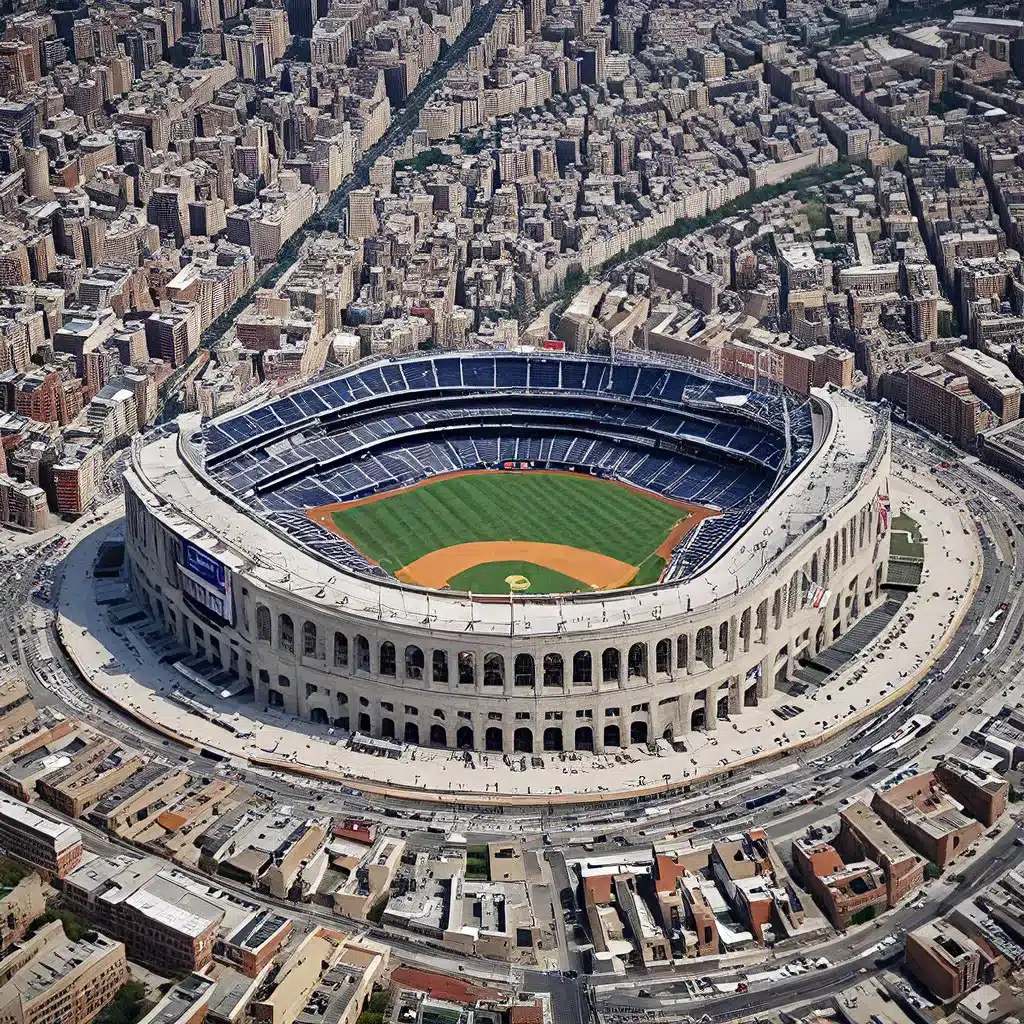
Nestled in the heart of the Bronx, New York, Yankee Stadium stands as a testament to the enduring spirit of American sports and the city’s rich cultural tapestry. This iconic baseball venue has witnessed the rise and fall of legends, the thrill of championship victories, and the unwavering loyalty of generations of fans. As we delve into the stadium’s captivating history, we uncover a story that is inextricably woven into the fabric of the Bronx and the larger-than-life narrative of the New York Yankees.
The Birth of a Baseball Mecca
The origins of Yankee Stadium can be traced back to the early 20th century, when the New York Yankees were in search of a permanent home. In 1922, the team’s owners, the Ruppert and Huston families, decided to construct a state-of-the-art ballpark in the Bronx, which was rapidly becoming a bustling hub of activity. The decision to move the team from Manhattan to the Bronx was a strategic one, as the borough offered ample space and a growing population eager to embrace the team.
The stadium’s groundbreaking took place on May 5, 1922, and the construction process was a marvel of engineering and architectural prowess. Designed by the renowned architect Osborn Engineering Company, Yankee Stadium was envisioned as a grand temple of baseball, with its imposing facade and seating capacity of over 58,000. The stadium’s design, inspired by Fordham University’s iconic Rose Hill Gymnasium, blended elements of classical and modern architecture, creating a unique and visually striking landmark.
The Golden Age of the Yankees
The opening of Yankee Stadium on April 18, 1923, marked the beginning of a golden era for the New York Yankees. The team’s star-studded roster, led by the legendary Babe Ruth, quickly established the stadium as a mecca for baseball enthusiasts. The “House that Ruth Built,” as it was affectionately known, became the stage for some of the most iconic moments in sports history.
During the 1920s and 1930s, the Yankees dominated the American League, winning 12 pennants and 7 World Series championships. The team’s success drew throngs of fans to Yankee Stadium, who came to witness the exploits of players like Lou Gehrig, Lefty Gomez, and Joe DiMaggio. The stadium’s atmosphere was electric, with the roar of the crowd echoing through the grandstands and the smell of hot dogs and peanuts filling the air.
The Wartime Years and Postwar Resurgence
The 1940s brought new challenges to Yankee Stadium as the nation grappled with the realities of World War II. Many of the team’s star players, including Joe DiMaggio, were called to serve in the armed forces, leaving the Yankees to navigate a period of uncertainty. Despite these obstacles, the stadium remained a symbol of resilience and national pride, hosting war bond rallies and serving as a training ground for military personnel.
In the years following the war, the Yankees reclaimed their dominance, winning 13 pennants and 7 World Series titles between 1947 and 1964. The stadium witnessed the emergence of new superstars like Yogi Berra, Mickey Mantle, and Whitey Ford, as well as the team’s continued success on the field. The postwar era saw Yankee Stadium solidify its status as one of the most iconic and recognizable sports venues in the world, a testament to the enduring appeal of the New York Yankees and the city’s passion for the game.
Modernization and Renovation
As the decades passed, Yankee Stadium faced the challenge of aging infrastructure and the need for modernization. In the 1970s, the stadium underwent a major renovation project, which aimed to preserve its historic character while upgrading the facilities to meet the demands of a changing sports landscape.
The renovation project, completed in 1976, saw the addition of a new upper deck, expanded concourses, and improved amenities for players and fans. The distinctive arched windows and grand facade of the original stadium were maintained, ensuring that Yankee Stadium retained its classic aesthetic while embracing a more modern design.
A New Era for Yankee Stadium
In 2009, Yankee Stadium entered a new chapter in its storied history, as the original ballpark was demolished and replaced by a state-of-the-art facility. The new Yankee Stadium, located just across the street from its predecessor, was designed to capture the essence of the original while incorporating cutting-edge technology and amenities.
The new stadium features a retractable roof, modern concession stands, and luxurious suites, catering to the evolving needs of fans and players. Despite the changes, the new Yankee Stadium has managed to preserve the spirit and traditions of the original, with the iconic frieze and “interlocking NY” logo still prominently displayed.
The Enduring Legacy of Yankee Stadium
As the years have passed, Yankee Stadium has continued to captivate the hearts and minds of baseball fans around the world. The stadium has witnessed countless moments of triumph and heartbreak, from the heroic achievements of Babe Ruth and Mickey Mantle to the heartbreaking tragedy of the Thurman Munson’s untimely passing.
Today, Yankee Stadium stands as a living monument to the enduring legacy of the New York Yankees and the city’s unwavering love for the game of baseball. Visitors from across the globe flock to the stadium, eager to soak in the atmosphere and connect with the rich history that permeates every inch of the iconic venue.
As we step into the future, the story of Yankee Stadium continues to unfold, with each new generation of fans and players adding their own chapter to this timeless narrative. The stadium’s ability to transcend the boundaries of sport and become a cultural touchstone is a testament to the power of sports to unite communities, inspire dreams, and create lasting memories.

